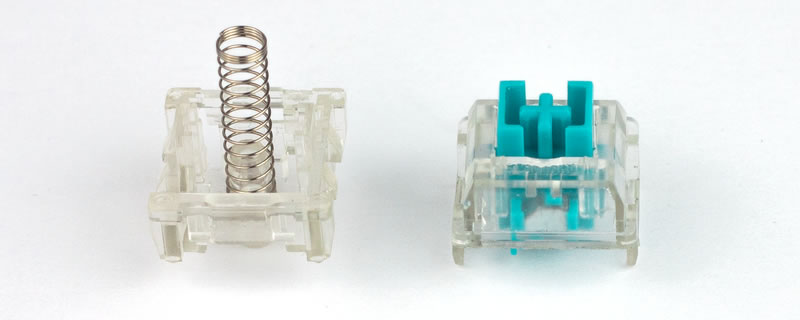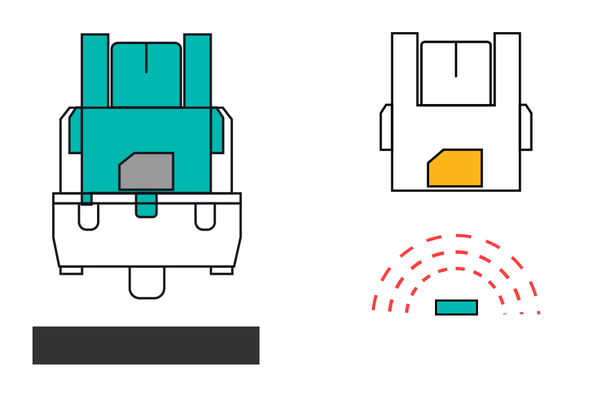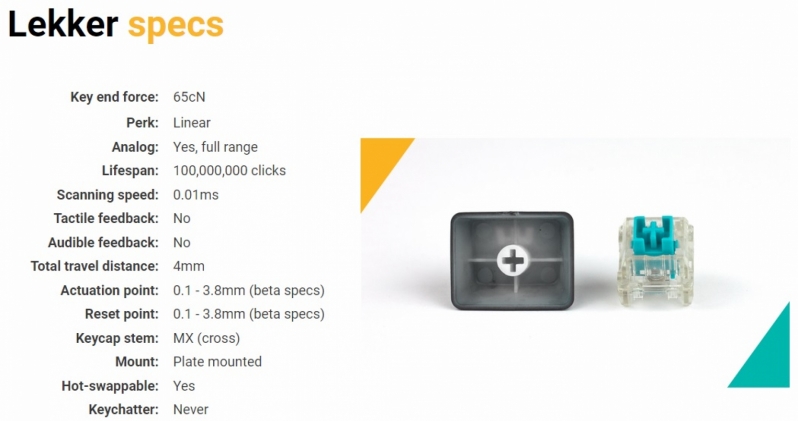Wooting plans to bring analog keys to the masses with Lekker switches
Wooting plans to bring analog keys to the masses with Lekker switches
Why do we need these versatile key switches? The simple answer is this; it provides users with more options. Imagine walking in a game with WASD, and if how far you pushed your keys influenced your character’s movement speed and directionality, providing an experience which could rival an analog stick, rather than give a mere eight direction options at a fixed movement rate. How about having hotkeys that did different things depending on how hard you pressed your keys switches?
Analog key switches are about providing PC users with more options, and while Wooting started the analog key movement, they also believe that the industry’s progress towards this target has been too slow and has moved in directions which made the company “feel uncomfortable”, prompting them to take a more hands-on approach to things.Â
Wooting is not a manufacturer of key switches, but they are the most experienced company in the world when it comes to manufacturing and producing analog keyboards, both on the hardware side and the software side. The development of the Wooting One and Wooting Two is evidence of this. Even so, Wooting has decided to develop what they call Lekker key switches, an in-development key switch which will enable 3rd parties and hobbyists to create analog keyboards.Â
To do this, Wooting has partnered with Huannuo (Huano) and Major-Power (mPower), both of which are well-known switch makers for keyboards, mice and other devices. Wooting plans to make Lekker viable for mass production while offering full-range analog input, lowering the barrier to entry when it comes to creating analog input devices. Â
So how does the magic work? Lekker is what’s termed a “hall-effect” switch, which uses a magnet in the switch’s stem which is detected by a proximity sensor that sits under the switch’s PCB. The closer the magnet gets to the PCB, the stronger the signal is, with this signal being what is used to define what each switch does. The animation above shows what’s happening at a basic level.Â
Specs-wise, Lekker keys require 65cN of actuation force and are designed to be compatible with industry standard MX key stems. These keys are designed to be hot-swappable for easy keyboard repairs and added customisability, with each key being designed to offer a lifespan of 100 million clicks. The actuation and reset points of these keys are currently in beta and are subject to change.Â
At this time it is unknown when Wooting’s Lekker key switches will be ready for mass production, or if 3rd parties will choose to adopt their offerings over world-renowned competitors like Cherry, whose key switches are found in most high-end mechanical gaming keyboards.
You can join the discussion on Wooting’s Lekker Key Switches on the OC3D Forums. Â





